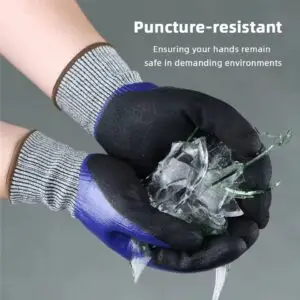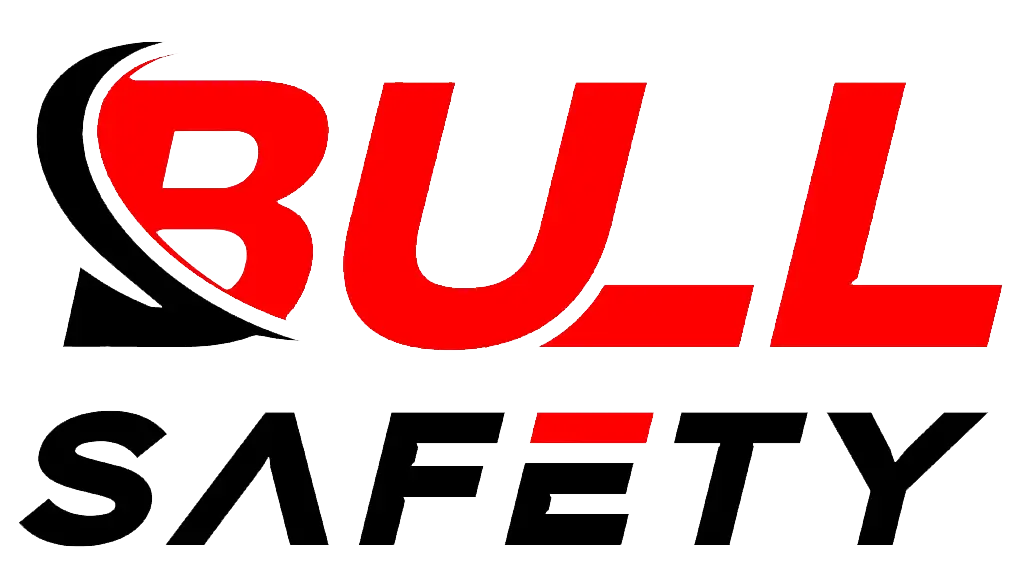
Understanding puncture resistance1 is crucial when selecting gloves for high-risk environments. But what exactly does it mean, and why should you care about it?
Puncture-resistant gloves protect hands from sharp objects like needles, nails, and glass by preventing penetration. They are essential for construction, medical, and industrial work.
Since I’ve been in the safety glove industry for years, I always emphasize the importance of choosing the right materials:
- [Kevlar](https://hivissafety.com/blogs/hi-vis-safety-blog/the-uses-and-advantages-of-kevlar-work-gloves)2 offers high strength and dexterity, making it a great choice for industries requiring flexibility and protection.
- [HPPE](https://alsco.com/resources/what-are-hppe-cut-resistant-gloves/)3 is known for durability and puncture resistance, ideal for construction and metalworking.
- Stainless steel mesh gloves provide the highest puncture resistance, commonly used in medical and prison settings, but they can be less comfortable.
To ensure the best protection, I always recommend balancing protection, comfort, and dexterity based on specific job risks.
What is the Most Puncture-Resistant Material?
Are all glove materials equally resistant to punctures? Not quite. Some materials offer significantly better protection than others.
Kevlar and HPPE are the most puncture-resistant materials, offering superior protection against sharp objects. Kevlar provides flexibility and durability, while HPPE is stronger and more resistant to abrasion.
Kevlar
Kevlar is an aramid fiber known for its high strength-to-weight ratio and durability. It is commonly used in cut-resistant and puncture-resistant gloves because of its tight weave that blocks penetration from sharp objects like needles, nails, and broken glass.
- High flexibility makes it great for long-term wear.
- Lightweight protection ensures comfort.
- Better for low-abrasion tasks like security, law enforcement, and healthcare.
HPPE (High-Performance Polyethylene)
HPPE is a synthetic material known for high puncture resistance, lightweight properties, and chemical resistance. When paired with nitrile coatings, HPPE gloves offer:
- Superior durability for heavy-duty environments.
- Excellent cut and puncture resistance for construction and recycling.
- Increased chemical resistance, making them a preferred choice for hazardous material handling.
Material Comparison Table
| Material | Puncture Resistance | Weight | Durability | Best Use Cases |
|---|---|---|---|---|
| Kevlar | High | Light | Moderate | Construction, industrial work, medical |
| HPPE | Very High | Light | High | Recycling, construction, metalworking |
Do Needle-Proof Gloves Work?
Many of my customers ask whether needle-proof gloves truly work.
Needle-proof gloves provide strong protection against needle punctures but are not completely puncture-proof. Materials like stainless steel mesh and Kevlar offer the highest resistance.

These gloves are essential in:
- Hospitals
- Prisons
- Laboratories
Most needle-proof gloves are made with stainless steel mesh4 or aramid fibers, woven tightly to prevent punctures while allowing for some flexibility.
That said, no gloves are 100% puncture-proof, so proper handling techniques and training5 are just as important as wearing the right gloves.
Some needle-proof gloves also feature nitrile or polyurethane coatings6 to:
- Enhance durability
- Improve chemical resistance
- Provide a better grip in wet conditions
Needle-Proof Gloves Comparison
| Material | Puncture Resistance | Comfort Level | Durability | Best Use Cases |
|---|---|---|---|---|
| Stainless Steel Mesh | Very High | Low | High | Prisons, medical settings |
| Kevlar | High | Moderate | Moderate | Healthcare, law enforcement |
| HPPE with Nitrile Coating | Moderate | High | High | Hospitals, needle handling |
What Are the Best Gloves to Prevent Needle Stick Injury?
Needle stick injuries are a major risk in medical and law enforcement professions. Choosing the right gloves can significantly reduce the danger.
Stainless steel mesh gloves provide the best needle-stick protection, followed by Kevlar-coated gloves for comfort and flexibility. Choose gloves with ANSI puncture resistance ratings for added safety.

The most effective needle-resistant gloves include:
1. Stainless Steel Mesh Gloves7
✅ Maximum puncture resistance
✅ Ideal for prisons, hospitals, and security use
✅ Physically blocks needle penetration
❌ Heavy and less flexible
2. Kevlar Gloves8
✅ Lightweight and breathable
✅ Used in hospitals, labs, and security
✅ Often coated with nitrile for added protection
❌ Less protective than steel mesh against extreme risks
For maximum safety, gloves should fit properly to prevent needle slippage while handling sharp objects.
Conclusion
Choosing puncture-resistant gloves is essential for ensuring safety in high-risk environments.
- Kevlar and HPPE gloves provide excellent protection in construction and metalworking.
- Stainless steel mesh gloves offer maximum puncture resistance, making them ideal for prisons and medical settings.
- Needle-proof gloves help reduce risks, but no gloves are 100% puncture-proof.
When selecting gloves, I always tell my clients to focus on:
✅ Protection – Does the material resist punctures effectively?
✅ Comfort – Can you wear them for long shifts?
✅ Dexterity – Do they allow precise movement while handling tools?
If you need expert advice on the best puncture-resistant gloves, feel free to contact me anytime!
Footnotes
-
Understanding puncture resistance is vital for safety in high-risk jobs. Explore this link to learn more about its significance. ↩
-
Kevlar is renowned for its strength and flexibility. Discover how it enhances safety in various industries by exploring this resource. ↩
-
HPPE is crucial for durability and puncture resistance in gloves. Learn more about its applications and benefits in this informative link. ↩
-
Explore the advantages of stainless steel mesh gloves, known for their high puncture resistance and durability, essential for safety in high-risk environments. ↩
-
Understanding proper handling techniques and training is crucial for maximizing safety and minimizing risks in medical and law enforcement settings. ↩
-
Discover how these coatings improve glove durability and chemical resistance, making them ideal for various applications in healthcare and beyond. ↩
-
Discover the advantages of stainless steel mesh gloves, including their effectiveness and applications in various fields. ↩
-
Learn about the protective features of Kevlar gloves and their suitability for different environments, enhancing safety. ↩



